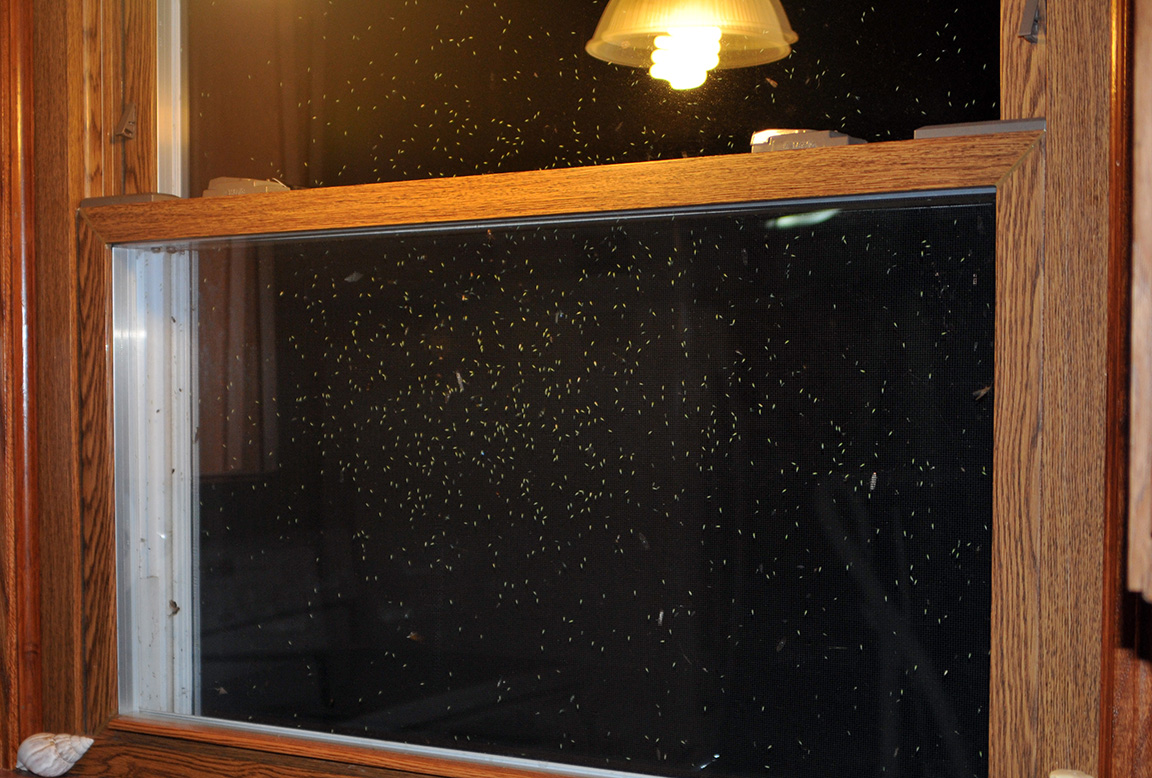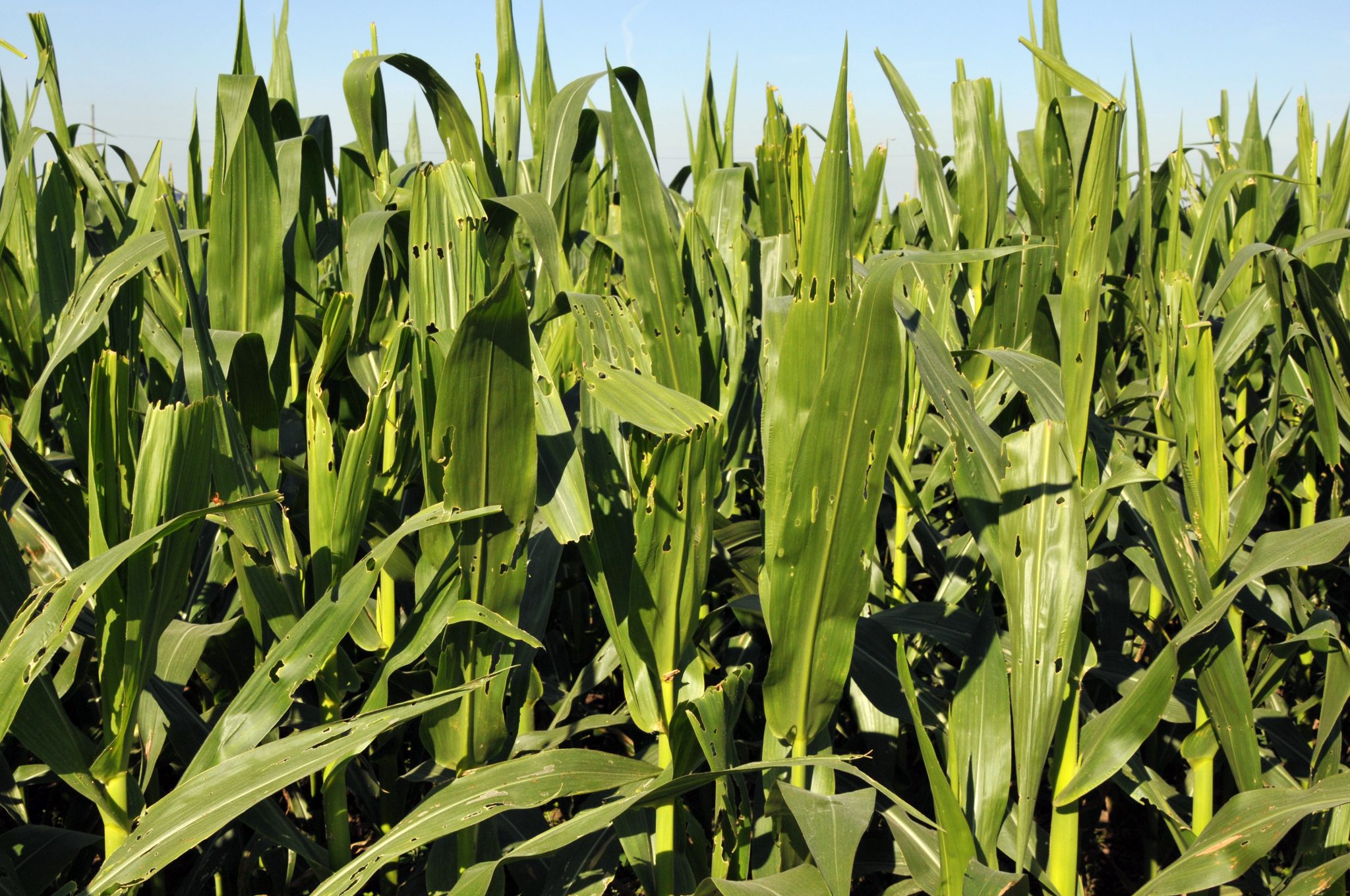• Weather systems originating in the south will often carry insects north with them.
• Potato leafhopper and a wide range of moth pest species (armyworms and cutworms) could be more abundant in coming weeks.
As Tropical Storm Cristobal peters out over the upper Midwest, it’s time for a reminder about how many southern insect species recolonize Indiana each year – sometimes on weather fronts just like this one. Weather events that originate from the due south are less common than our typical winds out of the west, and carry different potential for insect pests.
Potato leafhopper doesn’t overwinter here, and typically peaks in numbers in the later weeks of June and into July, while feeding on a wide variety of plants – not just potato – and including alfalfa, and many vegetables, fruits, and ornamentals. Like many winged insects, leafhoppers use their wings primarily for dispersal, to colonize new and different areas with more favorable climate and less competition. But wings aren’t enough, and to accomplish these long-range migrations, insects “go with the flow” and fly high into the jet-stream where they can be transported passively, by prevailing winds, often for hundreds of miles. carried along by prevailing winds. Where they drop will depend on when a high-pressure system meets a low-pressure system, resulting in rainfall and insect deposition.
Similarly, fall armyworm, has likely made its arrival to Indiana sooner than its normal assist from late-summer hurricanes originating from the Atlantic Ocean. This armyworm species has many legume and grass hosts, most recognized for feeding in late-planted field/sweet corn and “blasting-out” the whorls or feeding in the ears. Any of you that scouted the many late-planted fields of 2019 likely saw some late-season, and likely non-economic whorl feeding by this pest. Over the past several years, this pest has been tearing through many parts of Africa, where it is finding new hosts and few natural enemies. Fall armyworm is known to be resistant to most Bt-traits, and is historically difficult to control with foliar insecticides if the early window is missed.
Bottom line – anytime large weather systems move through our area, especially during springtime, there is potential for sudden and unexpected pest outbreaks to follow. Be vigilant, and happy scouting.




